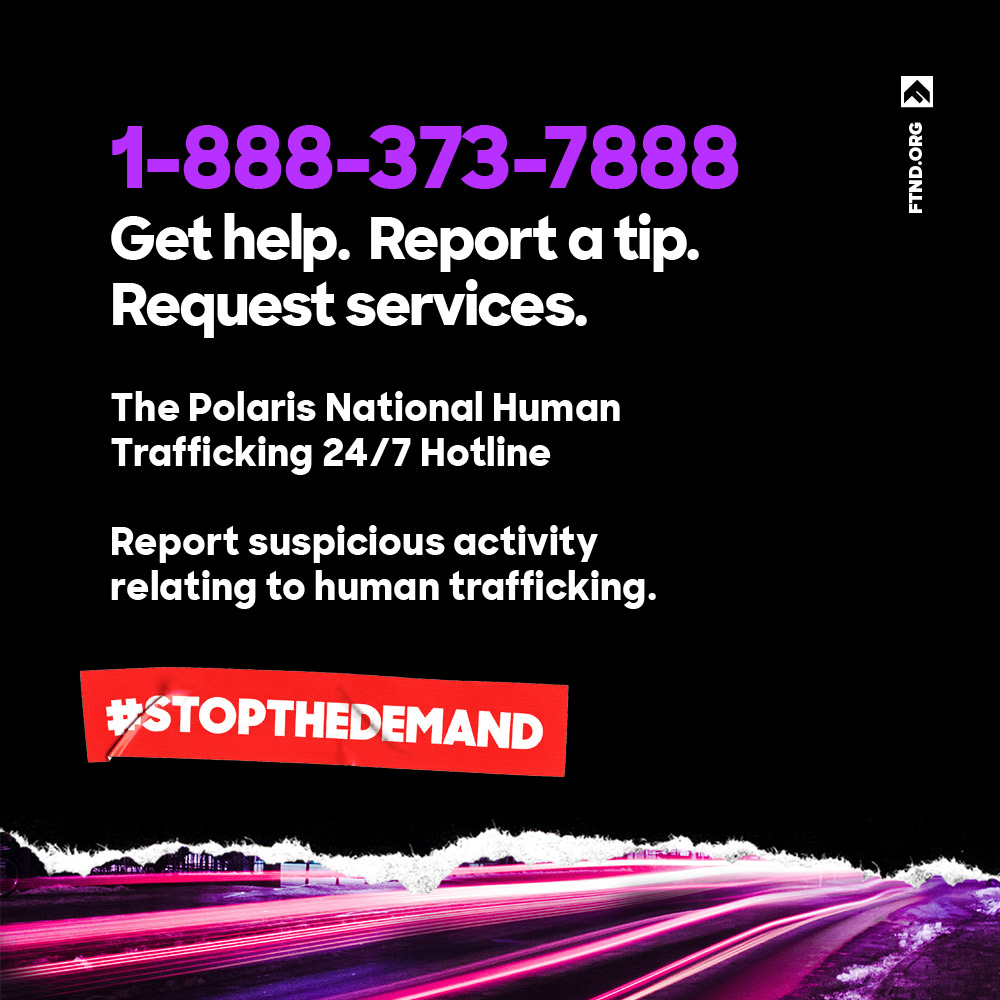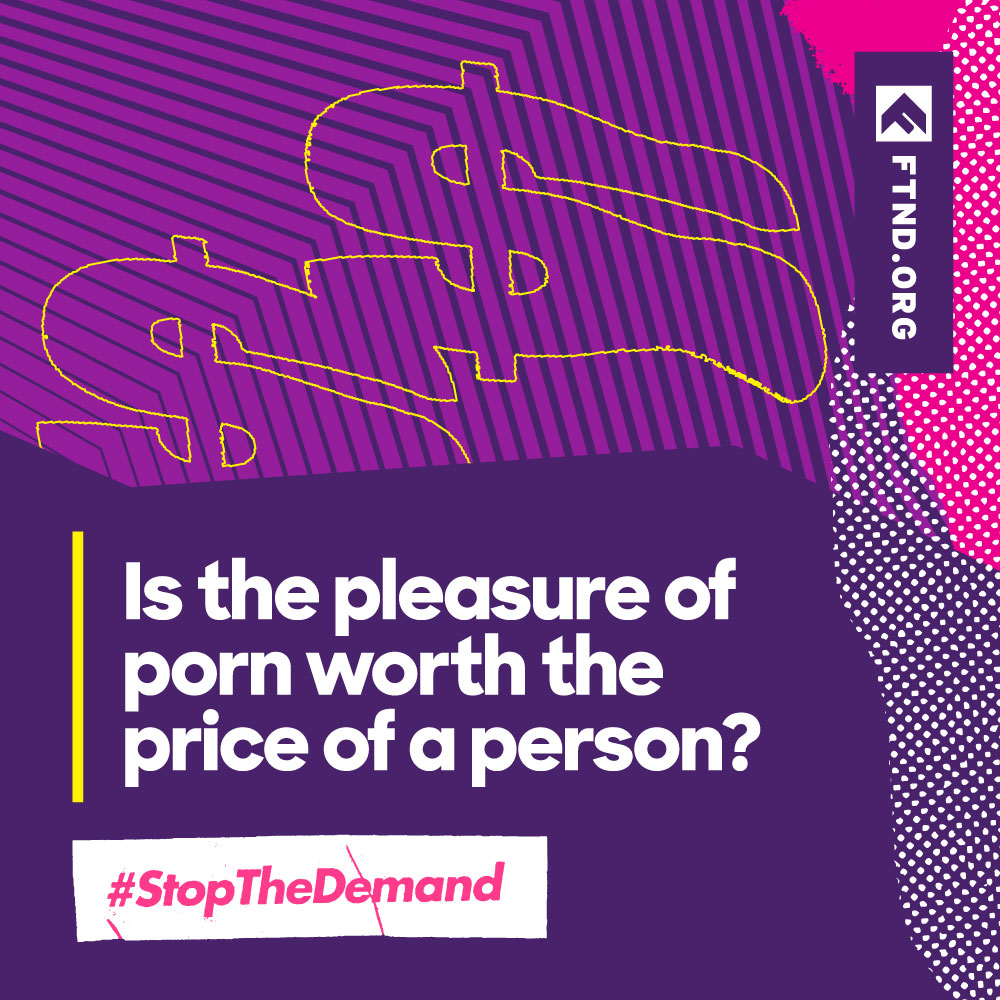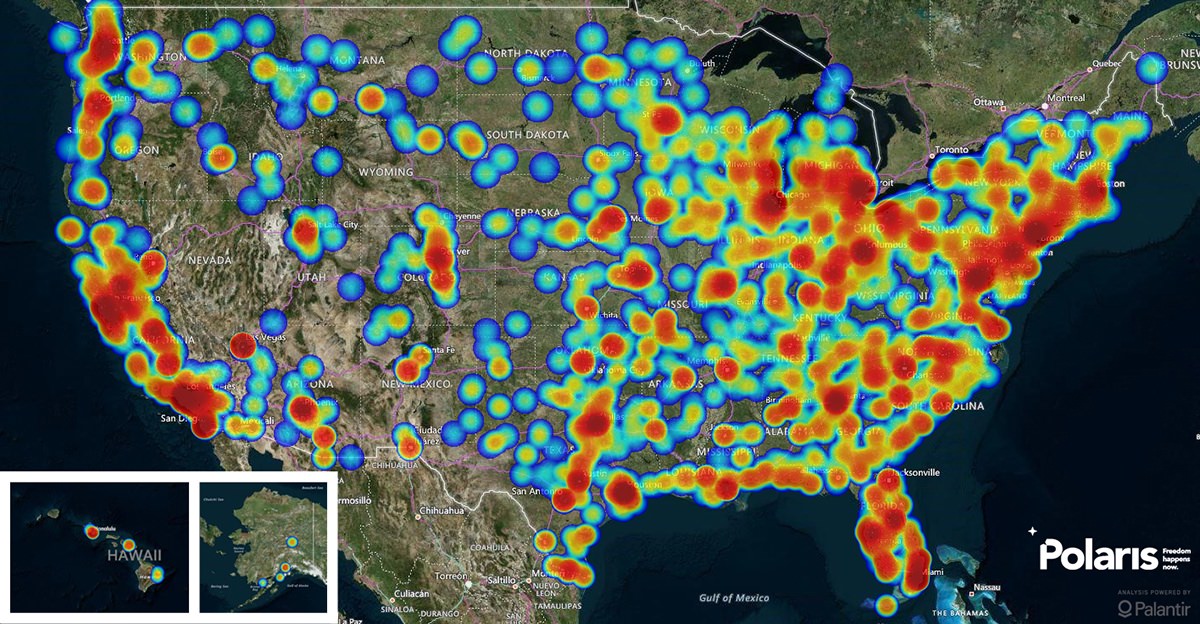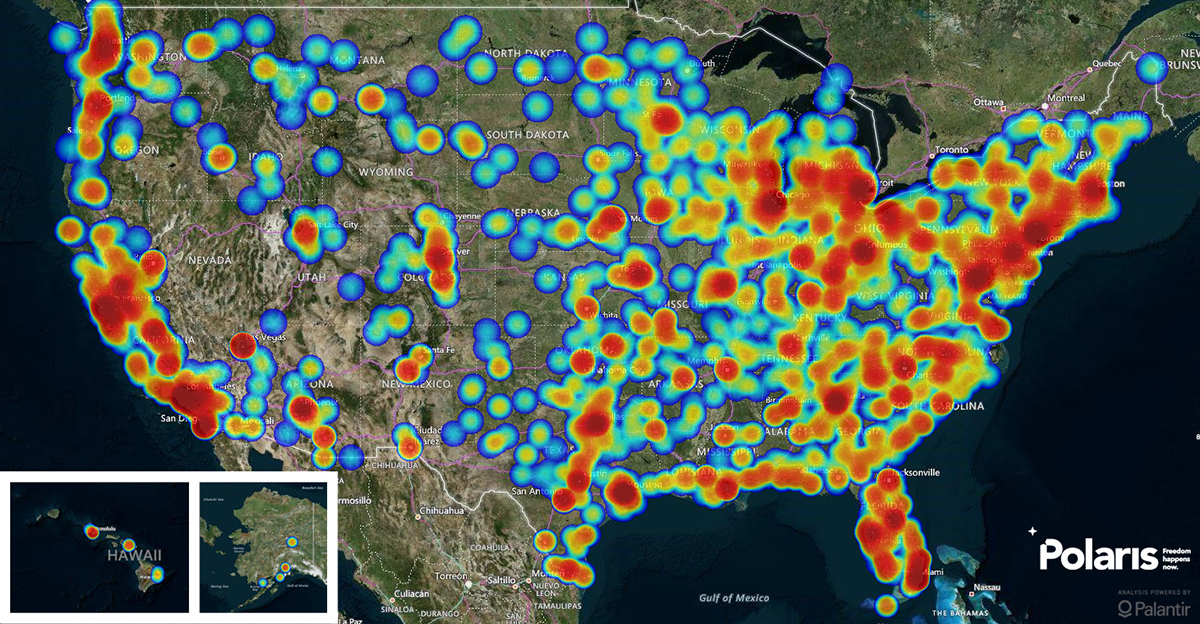Cover image from the Polaris Project 2017 Report. 4 minute read.
Where does trafficking happen in the United States?
According to the Polaris Project, a leading anti-trafficking organization based out of the U.S., trafficking happened in these areas in 2017:
That’s right, in every single state.
But how do they know?
According to one of their latest reports, 8,759 cases of human trafficking were reported to the National Human Trafficking Hotline and BeFree Textline—a 13% increase in cases compared to 2016—bringing the total number of cases reported to 40,987 since the Hotline’s creation in 2007. Over 6,000 of the cases reported last year were sex trafficking-related.
The cases identified on these helplines comprise the largest publicly available data set on human trafficking in the United States. It’s important to remember that the data do not represent the full scope of human trafficking and only show the tip of the exploitation iceberg. Lack of awareness of the crime or of trafficking-related resources in certain geographic regions, and by particular racial or ethnic groups can lead to significant underreporting.
Sexploitation stats
From their 2017 report, let’s dive into a few significant numbers and information, all of which you can read for yourself by clicking here:
-The number of human trafficking cases reported jumped by 13%, with a 29% increase in individual survivors that were identified through reports and tips.
-The average age survivors reported that their sexual exploitation started was 19. Over 500 survivors reported being exploited when they were under 18.
-7,255 victimized individuals were involved with 6,244 sex trafficking cases.
Related: Why Fighting Sex Trafficking Needs To Include Fighting Porn
Understanding how a victim accesses the outside world helps pinpoint systems where victims could find the support they need to leave their traffickers. The top five points of access to potential help identified on the Polaris Project Trafficking Hotline include:
- Interaction with family/friends – 1,567 cases
- Interaction with law enforcement/criminal justice system – 1,047 cases
- Access to health services – 726 cases
- Access to general social services – 726 cases
- Access to mobile apps or social media – 496 cases
See that? There are resources and access points for victims, it’s up to us to spot trafficking signs where we see them. Keep this number handy in case you ever have the opportunity to call and report something suspicious or trafficking-related:

Are pornography and sex trafficking connected?
You may be asking yourself, isn’t Fight the New Drug an anti-porn, pro-love, pro-sex awareness and education organization? Why are they talking about sex trafficking, then?
Great question, we’re so glad you asked!
Obviously, human trafficking is an underground business, making firm statistics hard to come by. But the facts in cases that come to light are chilling. For example, in 2011, two Miami men were found guilty of spending five years luring women into a human trafficking trap. They would advertise modeling roles, then when women came to try out, they would drug them, kidnap them, rape them, videotape the violence, and sell it to pornography stores and businesses across the country. [1] Not to mention that a very popular Japanese porn company was busted last year for forcing dozens of unsuspecting women into shooting porn. They advertised the porn shoots as modeling opportunities, made the models sign complicated contracts, and then blackmailed and forced these women into degrading and abusive shoots. One woman was even forced to perform in over 100 pornographic movies. How is that acceptable?
Related: 5 Simple Ways You Can Fight Sex Trafficking In Your Daily Life
Here is the reality of how trafficking fuels porn, as stated by Dr. Karen Countryman-Roswurm:
“Through the cycle of pornography-fueled physical and sexual abuse, pornography perpetuates further perpetration. Many of the individuals photographed or filmed for the use of pornography have a history of sexual abuse. Many still, while being materialized for citizens all across the world, are seemingly accepting such abuse and exploitation under the force, fraud, or coercion of a trafficker.
Pornography is the material means of sexual exploitation. Pornography is the proof, the very evidence that commercial sexual exploitation occurred. Pornography is verification of violence. And pornography is used again and again to prime, promote, and perpetuate the perpetration of boys and girls for the purpose of sex trafficking.”
We fight to bring awareness to the fact that porn isn’t harmless entertainment, and the porn industry wouldn’t be where it is today without sex trafficking and exploitation. Now that you know, will you join us in raising awareness?

Citations
[1] U.S. Department Of Justice. (2012). Two Men Sentenced To Multiple Life Sentences For Enticing Women To South Florida To Engage In Commercial Sex Acts And Distributing Date Rape Pills. Press Release, Feb. 17.
Your Support Matters Now More Than Ever
Most kids today are exposed to porn by the age of 12. By the time they’re teenagers, 75% of boys and 70% of girls have already viewed itRobb, M.B., & Mann, S. (2023). Teens and pornography. San Francisco, CA: Common Sense.Copy —often before they’ve had a single healthy conversation about it.
Even more concerning: over half of boys and nearly 40% of girls believe porn is a realistic depiction of sexMartellozzo, E., Monaghan, A., Adler, J. R., Davidson, J., Leyva, R., & Horvath, M. A. H. (2016). “I wasn’t sure it was normal to watch it”: A quantitative and qualitative examination of the impact of online pornography on the values, attitudes, beliefs and behaviours of children and young people. Middlesex University, NSPCC, & Office of the Children’s Commissioner.Copy . And among teens who have seen porn, more than 79% of teens use it to learn how to have sexRobb, M.B., & Mann, S. (2023). Teens and pornography. San Francisco, CA: Common Sense.Copy . That means millions of young people are getting sex ed from violent, degrading content, which becomes their baseline understanding of intimacy. Out of the most popular porn, 33%-88% of videos contain physical aggression and nonconsensual violence-related themesFritz, N., Malic, V., Paul, B., & Zhou, Y. (2020). A descriptive analysis of the types, targets, and relative frequency of aggression in mainstream pornography. Archives of Sexual Behavior, 49(8), 3041-3053. doi:10.1007/s10508-020-01773-0Copy Bridges et al., 2010, “Aggression and Sexual Behavior in Best-Selling Pornography Videos: A Content Analysis,” Violence Against Women.Copy .
From increasing rates of loneliness, depression, and self-doubt, to distorted views of sex, reduced relationship satisfaction, and riskier sexual behavior among teens, porn is impacting individuals, relationships, and society worldwideFight the New Drug. (2024, May). Get the Facts (Series of web articles). Fight the New Drug.Copy .
This is why Fight the New Drug exists—but we can’t do it without you.
Your donation directly fuels the creation of new educational resources, including our awareness-raising videos, podcasts, research-driven articles, engaging school presentations, and digital tools that reach youth where they are: online and in school. It equips individuals, parents, educators, and youth with trustworthy resources to start the conversation.
Will you join us? We’re grateful for whatever you can give—but a recurring donation makes the biggest difference. Every dollar directly supports our vital work, and every individual we reach decreases sexual exploitation. Let’s fight for real love:


